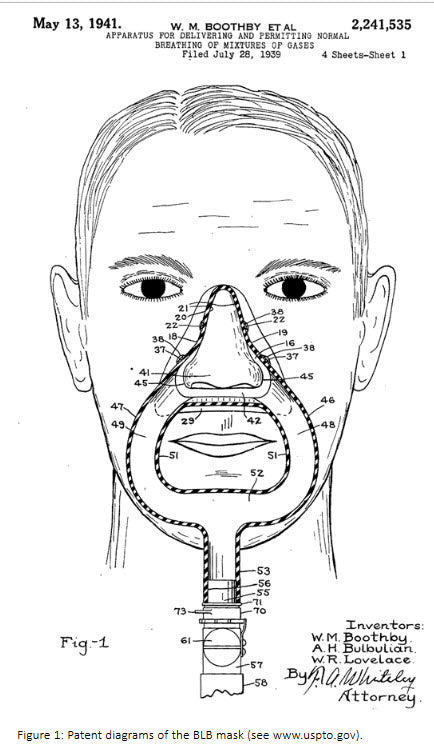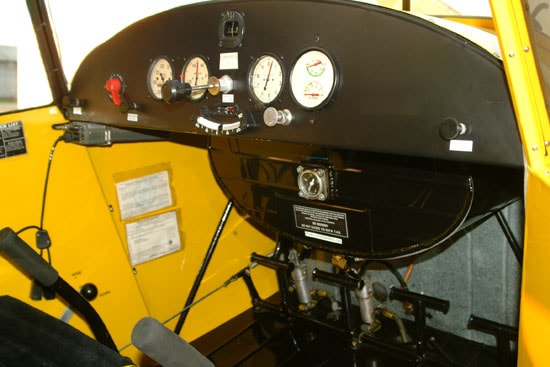The Hegenberger System
On September 30, 1895, the second child of Alphonse Frederick Hegenberger was born in Boston, MA. Alphonse and his wife, Emma, were immigrants from Bavaria and Switzerland.
This young child, Albert Francis Hegenberger, was very bright and in 1913 enrolled at the Massachusetts Institute of Technology as a aeronautical engineering student.
When the United States entered World War I, Albert Hegenberger enlisted as a Private in the United States Army, Signal Corps, Aviation Section on September 14, 1917.
He was assigned to the School of Military Aeronautics at M.I.T., and graduated in December, 1917.
He was then sent to Ellington Field, Houston, Texas, for primary flight training. Upon graduation he was promoted to 2nd Lt., Aviation Section, Signal Officers Reserve Corps on April 6, 1918.
In October of 1918 2nd Lt. Hegenberger returned to M.I.T., completed his degree in aeronautical engineering, and graduated in February 1919.
In 1919 2nd Lt. Hegenberger married Miss Louise B. Berhtold, and fathered two sons, Albert F. in 1920, followed by Robert F. in 1924.
He then continued his career in the U.S. Army Air Corps, serving as a bomber pilot in Hawaii as a 1st Lt. flying the DH-4 and twin engined Martin NBS1 bombers.

A DH-4 Liberty like the aircraft flown by Lt. Hegenberger in Hawaii.

A Martin NBS-1 Bomber like the ones flown by Lt. Hegenberger in Hawaii.
In October of 1926 he was assigned as the chief of the Equipent Branch, Material Division, at McCook Field, Dayton, Ohio. In June of 1927 he became chief of the Instrument and Navigation unit.
The Bird of Paradise
The U.S. Navy had requested Congress to authorize funds for aeronautical development in the Naval Appropriation Act for 1911-1912.
By the time World War I began the US Navy had one airfield at Pensacola, FL, and a total of 38 naval aviators, and 163 enlisted men trained in aviation, and 54 airplanes.
By the end of World War I the US Navy naval aviators numbered 438 officers, 5,548 enlisted, and had trained about 1,000 naval aviators.
By 1919 Naval Aviators had conquered the Atlantic with a five-leg flight from Rockaway Beach, New York, to Nova Scotia, Newfoundland, the Azores in the middle of the Atlantic, to Lisbon, Portugal, and ended in Portsmouth, England.
The only aircraft, NC-4, a Curtiss NC flying boat, commanded by Albert C. Read, flew the whole distance.

US Navy NC-4 aircraft making the first flight across the Atlantic Ocean in 1919.
On August 31, 1925, the US Navy launched a PN-9 Pelican flying boat with a crew of ten commanded by Commander John Rodgers, attempted to fly non-stop over the Pacific Ocean.
Unfortunately, they ran out of fuel before reaching their destination, and were lost at sea for ten days before being rescued.

A US Navy PN-9 Pelican aircraft used in the first attempt to fly non-stop over the Pacific Ocean.

A photograph of the crew of the PN-9 Pelican that attempted the first non-stop flight over the Pacific Ocean.
Army Air Corps Scores A Win
Lt. Albert F. Hegenberger, who had been developing navigation by radio beacons, was chosen as navigator in a Atlantic-Fokker C-2-3 Wight 220 aircraft, to navigate from California to Hawaii non-stop over the Pacific Ocean.
The pilot on this flight was Lt. Lester J. Maitland, a good friend and fellow pilot to Hegenberger.
At 7:09 A.M., Pacific Daylight Time, on June 28, 1927, a standard issue Atlantic-Fokker C-2, named the "Bird of Paradise", lifted off from Oakland Municipal Airport in Oakland, CA, destined for Wheeler Field in Hawaii.
At 6:29 a.m., June 29, 1927, Lts. Maitland and Hegenberger land at Wheeler Field, Hawaii. The flight took 25 hours and 49 minutes.

The Atlantic-Fokker C-2 Bird of Paradise aircraft in flight.

An interior view looking to the cockpit from the navigators station in the "Bird of Paradise."

Lts. Hegenberger and Maitlan deplaning the "Bird of Paradise" at Wheeler Field, Honolulu, Hawaii.
For their achievement, both Lts. Hegenberger and Maitlan were awarded the Distinguished Flying Cross, as well as the Mackay Trophy for the most meritorious flight of 1927.

The Secretary of the Army presents Captain Hegenberger Distinguished Flying Cross.
The Hegenberger System
The flight of the Bird of Paradise utilized a system of navigation designed by Lt. Hegenberger by deploying radio beacons as an aid to air navigation.
Captain Hegenberger continued his efforts through his role as chief of of the Equipent Branch, Material Division, at McCook Field, Dayton, Ohio to develop more and better instruments to aid in flying aircraft.
In 1927 Capt. Hegenberger became chief of the Instrument and Navigation unit which was tasked to develop a safer way to navigate and land aircraft.
Capt. Hegenberger drew up a simplified instrument system that would utilize a refinement to the radio compass which would allow the pilot to "hone in on nondirectional radio beacons (NDB)."
This system does not use directional radio signals, but rather allows the pilot to navigate to the radio from any fo 360 directions.
Side note: I have flown using the NDB system myself during my early flying career.
In the book "Innovation and the Development of Flight" by Roger D. Launius he shares the following about Hegenberger's successes:
“Hegenberger had begun tests of the system in September 1931. He aligned two low-frequency nondirectional beacons with the centerline of the runway at McCook Field, Ohio, one 1,500 feet from the field boundary and the other I ½ miles distant. Colocated with the NDBs were very high frequency marker beacons. Some fifty miles from McCook, Hegenberger would tune in the NDB at the inner marker ("A") and turn his aircraft until his radio compass needle pointed to zero. He then would fly toward "A" until a light illuminated in the cockpit, indicating his passage over the station.
“Immediately switching his receiver to the NDB at the outer marker ("B"), he would fly toward that location, noting the wind drift, until the proper light signal came on. Turning 180 degrees, Hegenberger would again tune in "A." He followed the radio compass indicator, adjusting for wind and descending at a normal glide angle, until he passed over "A." He then cut his power, placed the aircraft in a proper landing attitude, and waited for his wheels to touch the ground.”
Landing Blind
As Capt. Hegenberger became more comfortable with his new system, he decided to attempt a blind landing with a safety pilot on board his aircraft - a Consolidated NY-2 aircraft.

A Consolidated NY-2 in flight. A hood covers the rear cockpit, preventing the pilot from seeing outside.
Capt. Hegenberger the created the Hegenberger System which used a series of non-directional beacons (NDBs) and marker becaons on the ground, combined with a radio compass instrument and other gyroscopic instruments and receivers in the aircraft.
To test his system Hegenberger placed one NDB 1,500 feet from the airport boundary and another NDB 1.5 miles from the airport. Both NDBs were located in a straight line aligned with the runway heading.
Both beacons would signal the airplane equipment when it was directly overhead illuminating lights in the cockpit while the radio compass needle pointed to zero when it was heading directly toward the NDB.

A view of the cockpit of the Consolidated NY-2 showing the instruments.
On May 7, 1932, Capt. Hegenberger, accompanied by C.D. Carbulesco as safety pilot, made his first blind landing using the NBD system he had developed.
The following day he made two more successful tests of his system, still with a safety pilot.
On May 9, 1932 made the first ever solo blind landing without a safety pilot.
Initially there wasn't much fuss about his achievement, but in May of 1934 he was awarded an oak leaf cluster decoration to add to his Distinguished Flying Cross.

Capt. Hegenberger receiving the Collier Trophy from FDR on July 22, 1935.
The Hegenberger System became the preferred instrument landing system for both the Army Air Corps and the Department of Commerce.
The Civil Aeronautics Board created a new pilot rating, the Instrument Rating, and required all commercial pilots to demonstrate proficiency in instrument flying.
Today, the ILS (Instrument Landing System) based off of Capt. Hegenberger's system, is an essential part of aviation safety today.
Hegenberger Career
On December 30, 1940, Major Hegenberger was promoted to Lt. Col. and became chief of staff for operations of the Hawaiian Air Force at Fort Shafter, near Honolulu.
In 1947 Hegenberger transferred to the U.S. Air Force, serving until his retirement as a U.S. Air Force Major General on August 31, 1949. He served in the U.S. military nearly 32 years.
Post Script
Over the years I flown I have used the ILS system to land my aircraft, many times in marginal weather conditions. It always delivers when flown properly.
I hope you enjoyed this trip through some of the history of aviation. If you enjoyed this trip, and are new to this newsletter, sign up to receive your own weekly newsletter here: Subscribe here!
Until next time, keep your eyes safe and focused on what's ahead of you, Hersch!







Leave a comment
This site is protected by hCaptcha and the hCaptcha Privacy Policy and Terms of Service apply.